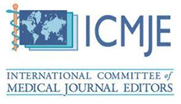Diencephalic-mesencephalic Junction Dysplasia: A Case Report and Overview of What is Known so far
Abstract
Background: Diencephalic-mesencephalic junction dysplasia (DMJD) is a rare and recently newly described forebrain-midbrain malformation involving the upper aspect of the brainstem and resulting in an abnormal regionalization of the diencephalon and mesencephalon level. The fingerprint of DMJD is the pathognomonic butterfly-like appearance of the midbrain seen on the axial plane of brain magnetic resonance imaging (MRI). Initially, only two types of diencephalon-mesencephalon continuity were defined: type A describes the continuity of the hypothalamus with the mesencephalon, and type B a parenchymal band between the thalamus and the superior surface of the midbrain. However, DMJD classification continues to expand, and recently, type C was described as showing a complete continuity of the thalamus and midbrain. In this paper, we refer to mesencephalon and midbrain as the anatomical marker of the topmost part of the brainstem, and those terms are used interchangeably in the text.
Methodology: PubMed database search for the exact words “diencephalic-mesencephalic junction dysplasia” and “DMJD” yielded 12 relevant publications. A showcase of an original rare type C DMJD was performed.
Objective: The purpose of this article is to present a brief comprehensive illustration /elucidation of the physiopathology of neural tube regionalization to facilitate the understanding of DMJD malformation; to present an updated overview of recent publications involving imaging findings, genetics, and clinical concerns; and to show an original fetal case of type C DJMD. The aim is to increase awareness of DMJD and strengthen clinical suspicion, especially since early diagnosis is primarily based on imaging.
Copyright (c) 2023 Patricia Piazza Rafful, Mareen Sarah Kraus

This work is licensed under a Creative Commons Attribution-NonCommercial 4.0 International License.
Copyright © by the authors; licensee Research Lake International Inc., Canada. This open-access article is distributed under the terms of the Creative Commons Attribution Non-Commercial License (CC BY-NC) (http://creative-commons.org/licenses/by-nc/4.0/).






















